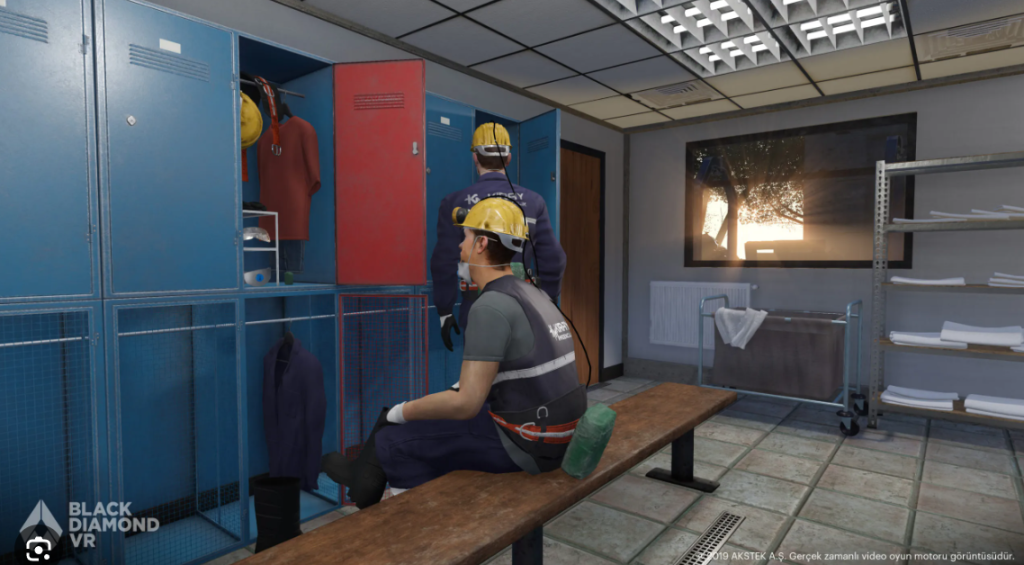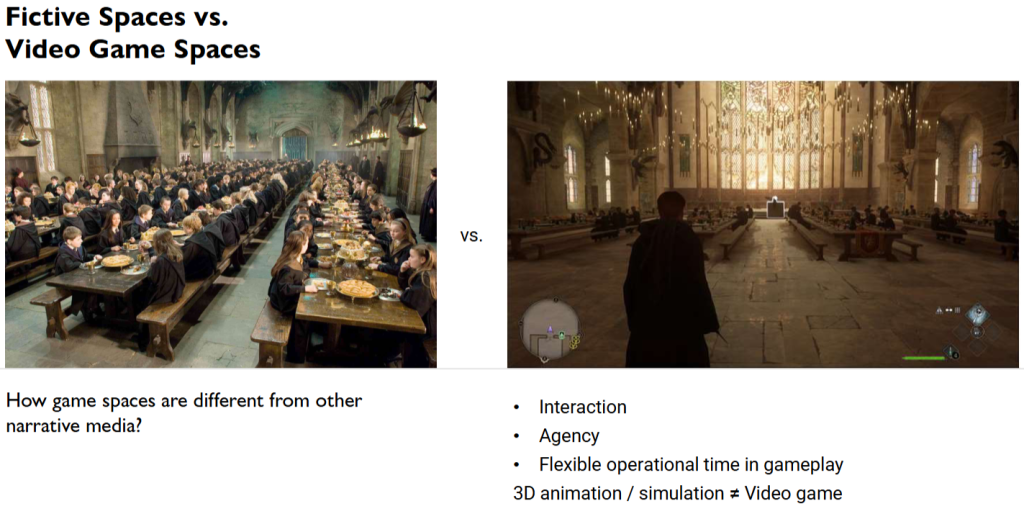World Bibles
This week, our focus was mainly on creating an in-depth world for our game to take place in. We’ll be implementing techniques and ideologies that will allow us to begin brainstorming and creating the foundation of our game worlds.
Task 3 – World Profile
For this task, we were given a sheet to fill out that would provide us with a small an interesting game world. In order to fill out the blanks we were given preset sentences that we had to combine in order to achieve what we believed to be a fascinating yet coherent world. This exercise allowed me to think about how I would create a profile for my own game world; in order to make it as engrossing yet clear world/story for the player to explore.


Guest Speaker – Oguz Orkun Doma
On our second weak we were introduced to our first guest speaker, Oguz Orkun Doma who had an architectural background and created a VR video game to explore a potential future of architecture within VR for his masters thesis.
Oğuz Orkun Doma is an architect (M.A.) who has earned his Ph.D. in the Architectural Design Computing program at Istanbul Technical University.
Working as Interaction Designer for Virtual Production at the University of Southampton. Previously worked as Product Manager at Hyperlab Games, XR Projects Manager at Neo Auvra Digital Health Technologies, Project Manager at AKSTEK AR/VR Training Technologies, Level Designer at Crytek Istanbul, and Research Assistant at Istanbul Technical University and BAU.

Most interestingly, in my opinion, Doma created a VR game which acted as an occupational safety and health vocational training application for underground coal miners by the name of “Black Diamond VR”

Doma acted as the head of game design and architectural level design. This software allowed new workers to experience real scenarios first hand without any of the risks; preparing them much better than any other potential training that they could have received otherwise.
Game Spaces
With an educational background in architecture, Doma’s lecture consisted of explaining to us that architecture as a whole – especially within video games – is so much more than just creating pretty-looking buildings to fill our game worlds with. The architecture used within a game can give the player so many context clues that they can then use to create an impression of the game world – whether it be the time period, the lore, the emotions that are invoked within the player or even the overall atmosphere of the game etc.
To further link his points of architecture within the realm of video games, he gave us an example of how the appearance of Hogwart’s Castle in the Harry Potter series had changed as the books were adapted into movies and then into a video game.


The overall style of the castle was kept relatively consistent throughout all of its iterations, however, it was adapted in order to better suit the form of media it was being portrayed in. This has allowed me to think about how I would personally design certain aspects of the map/level within my own game – portraying how it is essential to use real-life references when creating spaces and point of interest within a game map but to also adapt it to allow the player to have a better experience.
Phenomenology
In the slideshow that Doma had prepared for us, he defines Phenomenology as the philosophical study of
phenomena, the structure of experience of beings, how things appear in human experience, experienced from the first-person point of view. To be completely honest, when this was first explained I had no idea what this could possibly mean; I initially thought it was an extremely convoluted way of saying that the player’s experience was key to creating a good game (Which I still partially do), We were then shown a quote to do with Phenomenology that really resonated with me.
“Players want to engage not with the screen but with a fictional world these images bring to mind.”
(Michael Nitsche, “Image, Play, and Structure in 3D Game Worlds”, 2008)”
In my mind I understood this as it isn’t enough to create a “fun game” when developing a game world, but you must be able to engross the player so much that it feels like another reality to them. The reason this resonated with me so deeply as I wanted my game to have themes of escapism, using video games or “play” in general in order to escape a cruel reality.
Immanuel Kant’s The Critique of Pure Reason
What we perceive (“phenomenon“) is shaped by our cognitive faculties: as they appear to us in space and time. The underlying reality (the “noumenon” or “thing-in-itself“) remains unknowable. For example, the phenomenology of a sword within a video game acts as a path towards escaping from a reality they don’t want to be a part of.
Empirical Realism
- Microns: A unit of measurement for the edge apex thickness of a knife (Sharpness)
- Weight: 1-1.5kg depending on the length of blade and materials of construction
- Material: A Katana is usually made using a Japanese steel called “Tamahagane”

Phenomenology
- The weight of power to be able to end another life – although it is a virtual NPC
- A pathway to be able to experience another life other than one’s own
- The lore and history of the sword within the context of the game world
Task 4 – Breaking down a Gameworld
For this task, we had to choose a story that we loved and were familiar with – I had chosen a manhwa (Korean manga/cartoon) by the name of “Omniscient Reader’s Viewpoint”. I then identified three distinct domains within the story and selected on the break down into three key areas. Within these three areas I described the: Environment, Gameplay Elements and Visual and Sensory Details. Lastly, I considered the player’s journey throughout this distinct domain within the story; outlining how they would navigate the area and identifying key objectives and challenges that they would have to face – and how it would effect the overall narrative, story and player experience.

This task forced us to create a triadic breakdown of an existing world within media which allowed me to think about how I could further analyse specific parts of my own game world – delving further into the particularities of how certain areas would interact and how each area would progress the story. As my game is an open-world souls-like, I feel it is crucial to plan out how each area is able to advance the lore without giving away too much to the player or creating a situation in which the area progression would be too linear.
Review
This week has taught me how to worlds and spaces can be effected and optimized for video games in general, game worlds must be suited to the media that they are in and must also have key selling points that make them interesting and worth exploring.